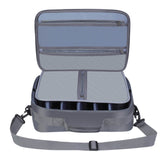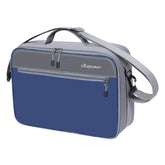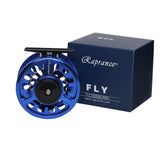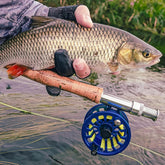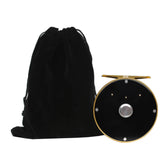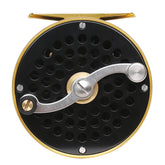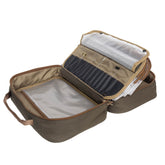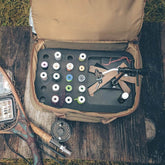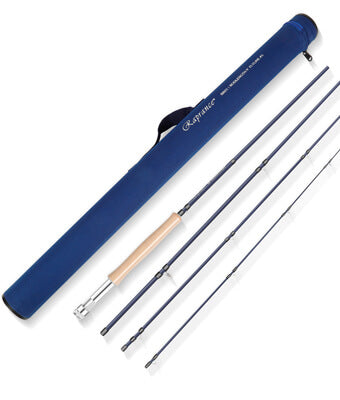Flies: Essential Setup for Stream and Big Game Fishing
When I venture into the world of fly fishing, the right flies can make all the difference in my success on the water. Setting up my fishing flies properly not only enhances my casting ability but also increases my chances of enticing fish. Understanding the nuances of different types of flies, such as those used in big game fishing or stream fishing, is essential for maximizing my fishing experience.

I often find myself exploring various options for purchasing fishing flies, sometimes opting for bulk purchases to save money without sacrificing quality. This allows me to have a diverse selection at hand, from specialized big game flies to various stream fishing patterns that cater to different fishing environments. Each fly I choose plays a role in my strategy and overall effectiveness as an angler.
By focusing on the right setup and selecting the best flies for my fishing conditions, I significantly enhance my time spent on the water. Whether I'm pursuing big game fish or enjoying a peaceful day on a stream, I know that the right fishing flies are pivotal to my success.
Fly Fishing Equipment Essentials
Selecting the right equipment is crucial for successful fly fishing. The effectiveness of my setup depends on choosing appropriate flies and the right rods and reels to match my targeted fish species and fishing conditions.
Selecting the Right Fishing Flies
Choosing the right fishing flies requires an understanding of the target fish and the environment. I often consider dry flies, nymphs, wet flies, and streamers, each serving different purposes. For instance, dry flies mimic insects on the water's surface, while nymphs replicate the underwater lifecycle of insects.
I evaluate local fish species and their feeding habits. If fishing in fast-moving streams, I lean towards streamers for more aggressive fish like trout. In calmer waters, I prefer subtle dry flies for surface feeders.
Additionally, I assess the durability of the flies, especially if I anticipate catching larger fish. Using quality materials ensures my flies withstand multiple catches without needing frequent replacements.
Understanding Rods and Reels
Rods and reels are vital components that affect casting control and fishing power. I choose rods based on the fishing style—whether I am targeting small brookies in a stream or larger species like bass in lakes.
The action of the rod matters. A faster action rod allows for quick casting, while a slower action rod provides better sensitivity. I often opt for a medium-weight rod for versatility.
Reels must match the rod and line weight. A reliable reel helps in maintaining control during a fight, especially with larger fish. Portability is also important to me, so I prefer lightweight reels that are easy to transport.
By carefully selecting my equipment, I increase my chances of successful outings and enjoyable fishing experiences.
Fly Tying Techniques and Tips
In fly tying, precision and attention to detail are crucial for creating effective flies. The techniques vary significantly depending on the target species and the fishing conditions. Below are strategies for creating flies tailored for big game and stream fishing.
Creating Big Game Fishing Flies
When tying flies for big game fishing, I focus on durability and size. Using strong materials like heavy-duty hooks and synthetic fibers ensures the fly withstands the power of large fish. Key points include:
-
Material Choices: Opt for materials designed for saltwater conditions. These include foam, mylar, and silicone, which resist wear and provide buoyancy.
-
Weighting: Incorporate lead or bead chain eyes to ensure the fly sinks quickly. This is vital in deep waters where big game fish reside.
-
Scale and Color: I pay particular attention to scale and color. Realistic patterns that mimic the local baitfish can significantly increase success rates.
Designing Flies for Stream Fishing
For stream fishing, I emphasize smaller, more delicate flies that mimic aquatic insects. Factors such as water conditions and fish species influence my design choices. Important aspects include:
-
Hook Size: I typically use smaller hooks, like size 14 to 20, to match the natural insect sizes in the stream.
-
Body Materials: Using natural materials like feathers and fur can enhance the fly’s realism. I often choose colors based on the specific stream environment.
-
Presentation: Proper casting techniques and control are essential in fast-moving water. I practice different retrieves, ensuring the fly maintains a natural drift.
By applying these specific techniques, I increase my chances of attracting the desired fish species effectively.
Budget-Friendly Fishing

When I plan a fishing trip, keeping costs down is essential. I often look for cheap fishing flies in bulk. This allows me to stock up without breaking the bank.
Choosing the right fishing style can also influence my expenses. For instance, stream fishing typically requires fewer specialized flies compared to big game fishing. I focus on versatile patterns that work well in various conditions.
Here are some budget tips I've found useful:
- Shop sales and discounts: Many online retailers offer periodic sales on bulk fishing flies.
- DIY flies: I sometimes make my own flies. This can be a fun and cost-effective way to customize my tackle.
- Local fly swaps: Joining a fishing community can help me trade flies with others.
Investing in quality flies usually pays off, but I prioritize budget-friendly options for casual outings. By selecting the right flies and buying them smartly, I maximize my fishing experiences without overspending.

